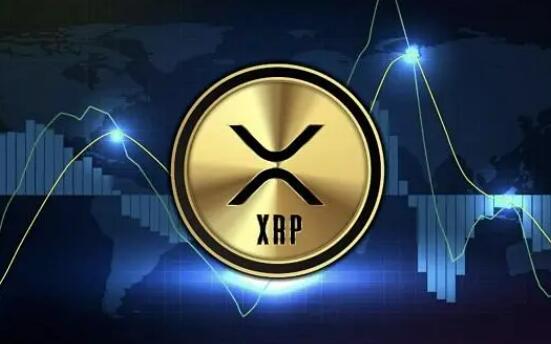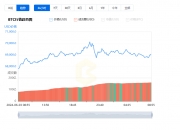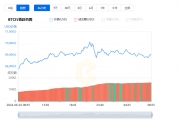就像人类会在不知道真相的情况下妄下结论一样,没有读过《资本论》的人可以大胆批判“剩余价值论”,以表明他们既熟悉西方经济学的起源,又深谙西方经济学的渊源。马克思主义。难怪《资本论》三卷,一千多页,确实让人望而生畏。
Just as humans will come to the conclusion without knowing the truth, those who have not read Capitalism can be boldly critical of the “residual value theory” to show that they are familiar with both the origins of Western economics and the roots of Western economics. Marxism.
历史就像一个可以被别人打扮的小女孩。哪怕是《资本论》这种不朽的杰作,从诞生之日起就没有留下“污名化”的悲惨经历。即使在世界上最成功的社会主义国家,其评论也前后不一致。它只是体现了《资本论》的宏大和博大精深,是常人无法阅读和理解的。
History is like a little girl who can be dressed up by others. Even the immortal masterpiece of Capitalism has not left behind a tragic experience of “stigma” since its birth. Even in the world’s most successful socialist countries, its comments are inconsistent.
甚至有人说,没有资本就不要读《资本论》,这是极其幼稚和可笑的。马克思在写《资本论》的时候,还需要恩格斯的解脱,他是不是没有资本的代表?为什么他能写出这样的杰作?
It's very naive and ridiculous to say that if you don't have capital, you don't read Capitalism. Marx, when he writes Capitalism, needs his relief. Does he not have a capital representative? Why can he write such a masterpiece?
与普遍看法相反,我认为应该早点接触《资本论》,因为不同的时代会有不同的阅读感受。《资本论》对于一个社会经验很少的人来说确实太难了。这就像没有攀登经验的人试图一次攀登珠穆朗玛峰一样不切实际。不过,既然登顶的目标已经定下来,就需要及早做好充分的准备。在日常生活中,要从政治学、经济学、历史学、人类学、金融学等不同角度补充知识领域所缺乏的“营养元素”,才能早日达到人类精神文明的巅峰。尽可能。
Contrary to the prevailing view, I think it would be useful to approach Capitalism earlier, because there are different reading feelings in different times. Capitalism is too difficult for a person with little experience in a society. It is as unrealistic as it is for a person without experience to try to climb Mount Everest at a time.
有大写的应该读“资本”,没有大写的应该读“资本”。因为在当今世界,资本无处不在,如空气般渗透在生活的方方面面。不了解资本运作的规律,就永远看不到社会的运作规律。这就是为什么被社会“打”过的人,读过《资本论》,会有一种豁然开朗的感觉,瞬间充满力量,年复一年地积累、反思、验证、实践、转化。,无限贴近这部杰作的核心,让你和你的同龄人拉开了非凡的鸿沟,从而改造了这个社会。
There is much to read about capital, and there is no much to read about capital. Because in today’s world, capital is everywhere, pervading in every aspect of life, like air. Without knowing the rules of how capital works, societies are never seen to function. That is why people who have been “stuffed” by society, and who have read Capitalism, have a sense of openness and a sense of power to accumulate, reflect, validate, practice, and transform at once, year after year.
系统阅读了《马恩文选》1-4卷重点章节,一步步梳理了重点章节和思想脉络后,打开《资本论》,怀着敬畏的心情打开了马克思主义经济学经典名著,不知道有没有我有勇气去读,不知道读完会收获多少,失去多少。我看过一些帖子说,在读《资本论》之前,你必须系统地阅读西方哲学、政治经济学和西方经济学,才能理解它。我想通了,如果我真的走这条路,我至少要开始读三五年,但人生没有那么多三五年,所以我开始阅读,记笔记,咀嚼一些困难的章节反复尝试 建立自己的初步认识。
The system read 1-4 volumes of the Mandarin Selection, read the highlights of the chapter and the confluence of ideas, opened the Capitalism, opened the classic Marxist economics book with a sense of piety, wondering if I had the courage to read it, how much I would get and how much I would lose. I read some posts saying that before reading Capitalism, you would have to read Western philosophy, political economics and Western economics systematically in order to understand it. I figured that if I really went this way, I'd have to start reading it for at least three or five years, but not so much in life, so I started reading, taking notes, chewing difficult chapters over and over and over again, building my initial understanding.
本文是“阅读资本”系列文章的第一篇。内容会不时更新。希望能给读者一些启发,唤醒更多的人去阅读、品味和使用这种有价值的方法。
This is the first article in a series entitled “Reading Capital.” The content will be updated from time to time.
有兴趣的读者可以准备一本三卷本的《资本论》,随时阅读,随时记笔记,随时记新,随时拿出来讨论。
Interested readers can prepare a three-volume Capitalism, read it at any time, take notes at any time, keep it up to date and bring it up to date for discussion.
第一条 商品和货币
Article 1 Commodities and currencies
第一章 商品
Chapter I Commodities
开篇用大量篇幅描述了一个核心问题:商品与货币的关系。在时间序列上,马克思认为一切商品都源于凝聚人类一般劳动的“劳动产品”。商品具有“使用价值”(即使用、利用价值)和“交换价值”的“双重性”。使用价值是商品的自然属性,也就是我们所说的使用和利用价值,目的是为了满足人类的某种需要。这是商品交换的物质基础。
In the time series, Marx believes that all commodities are derived from “work products” that congregate human labour in general. The goods have a “double character” of “use value” (i.e. use, use value) and “exchange value”. The use value is the natural attribute of the goods, that is, the use and utilization value we call it, in order to meet some of the human needs. This is the material basis for commodity exchange.
交换价值,即商品之间体现的共同价值,是值得交换的参照标准,即马克思所说的“人类的一般劳动”。交换价值的初始参考标准是人类在同一时期的平均劳动量,应以该时期在同一生产力水平下所花费的“平均劳动时间”来计算。因此,交易价值可以理解为“平均劳动力”。这种平均劳动量在商品交换的范围和链条不断扩大中马克思币,逐渐形成一个“共同标准”,一个普遍的等价物。这种一般等价物,在历史发展过程中,逐渐固定在“金银”等贵金属上,形成“货币”,即后来的货币。钱积累起来,就变成了资本。人们经常用货币的价值(价格)来衡量一种商品的价值,尤其是它的交换价值。交换价值是社会关系的一种表现。
The exchange of values, i.e. the common value embodied between commodities, is what Marx calls the “general human labour” that deserves to be exchanged. The initial reference point for the exchange of values is the average amount of human labour over the same period, which should be calculated by the “average working time” spent during that period at the same productivity level. Thus, the trade value can be understood as “average labour”. This average amount of work, in the scope of the commodity exchange and in the expanding chain, `strang' Markscoin
资本演化的逻辑链可以概括为:人→劳动→劳动产品→商品→金钱→资本。
The logical chain of capital evolution can be summarized as: human labour, goods and goods, money and capital.
马克思把这种从人到物的转化过程称为资本主义生产方式,并将其概括为“商品拜物教”。(正如宗教中的神是人的异化,商品是一种将人异化成物的崇拜方式)
Marx called this process of transformation from man to object capitalist production and summed it up as “commodity worship”. (Just as God in religion is alienated, commodities are a form of worship that transforms people into objects.)
以上是第一章的基本内容。以下是阅读过程中的一些感想和个人感悟。
These are the basic elements of chapter I. The following are some of the thoughts and personal feelings in the reading process.
第二章兑换流程
Chapter II conversion process
本章很短,解决了一个问题:交换过程的本质是什么,即交易。
This chapter is very short and solves a problem: what is the essence of the exchange process, i.e. the transaction.
马克思的核心观点是,交换过程隐藏了两个前提,
Max's central point is that the exchange process hides two premises.
承认私有制的存在。交易双方之间的合同(交易符合双方的意愿)。
The existence of private ownership is recognized.
马克思指出,商品交换发生在共同体的尽头,从与其他共同体或成员接触的地方开始。从最初的俘虏交换,到后来部落之间的物资交换,再到后来的商品交换。这些都是从社区的“解体”开始的。
Max points out that the commodity exchange takes place at the end of the community, starting with the place of contact with other communities or members. From the initial prisoner exchange, to the subsequent exchange of goods between tribes, to the subsequent exchange of goods. These begin with the “dissolution” of the community.
一开始可能是个人的一种交换行为,最后演变成整个部落的社会行为。因此,商品交换既是人与人之间关系的体现,也是社会关系的体现,受到一定的操作规则的制约。这是第一个前提,承认私有制的存在。
Initially, it may be an act of exchange for individuals, which eventually evolves into the social behaviour of the whole tribe. Thus, the exchange of goods is both an expression of human and social relations, governed by certain operating rules. This is the first premise, which recognizes the existence of private ownership.
马克思指出,商品只是物质,只有使用价值。但是,这种价值的表达需要通过“代理人”,即商品的所有者,将其带到市场上与他人进行交换,才能体现这种“交换价值”。
Max points out that the goods are only substances and only use values. However, the expression of such values requires “agents”, i.e. the owner of the goods, to be brought to the market for exchange with others in order to reflect such “exchange values”.
这里有一个前提,即市场上交易的商品对卖方没有使用价值,但对买方有使用价值。经过搜索和协商价格,最终达成共识,交易完成。关注过程是买卖双方意愿的体现,无论意愿是城下结盟,还是心甘情愿。交易完成的那一刻,交易的“合约”就缔结了。这是第二个前提。交易各方之间的合同关系。
Here is the premise that the goods traded on the market are of no value to the seller, but are of no value to the buyer. After searching and negotiating prices, a consensus is reached that the transaction is completed. The concern is the will of both buyers and sellers, regardless of whether the will is a suburban alliance or willingness. The “contract” of the transaction is concluded at the moment the transaction is completed. This is the second prerequisite.
交易从个体行为开始,逐渐发展成为“一般社会过程”,成为商品交易的“市场”。这种社会行为促使一种特定的商品成为一般等价物(从最开始的狩猎物资,到后来的各种易货交换),逐渐形成一种稳定的等价交换媒介,即货币。货币的结晶是交换过程的必然产物。
Starting with an individual act, the transaction evolves into a “general social process” and becomes a “market” for the trade in goods. This social act promotes a particular commodity to become a general equivalent (from the very beginning of the hunting material to the subsequent barter), gradually forming a stable equivalent-exchange medium, i.e. the currency. The crystallization of the currency is a necessary product of the exchange process.
交换过程链的演变:人类劳动→商品→货币。
Evolution of the chain of trade processes: human labour — commodities — currency.


随着交易规模的扩大,货币必须具备以下特点:
As the scale of transactions increases, the currency must have the following characteristics:
质地均匀。一不能多一少,一重一轻。每个零件都必须具有均匀分布的质地、密度、材质、重量等。这种材料天然不易腐烂、不易腐烂、经久耐用。可以按照数量的一定比例进行划分和合并。
This material is naturally non-perishable, non-perishable, long-lasting. It can be divided and combined in a number of proportions.
金银化学性质不活泼,非常稳定(易于保存),储量较小,难以开采(保存价值),易于铸造和分段。因此,贵金属已成为货币的首选媒介。在历史的长河中,逐渐登上了货币的宝座。因此,马克思说“金银自然不是货币,货币自然是金银”,这是由于历史经验造成的。
As a result of historical experience, precious metals have become the preferred medium for money. In the long river of history, the money has gradually been on the throne. So, Max says, “Golden is not a currency, and money is, of course, gold and silver”.
但是,虽然金钱是从一般等价物中诞生的,但这并不意味着金钱一诞生就有价值。它的价值来源实际上是人类劳动与可以生产的商品之间的交换量比。也就是说,黄金和白银虽然作为货币,但它的汇率,或者说购买力,是由当时社会的生产力(劳动时间与商品的交换率)决定的。因此,金钱是价值表现的终点,而不是起点。价值的开端始终是人的劳动。金银起初也是商品,但因为“天选之子”的特性,逐渐成为“一切人类劳动的直接化身”。但我们不要忘记,黄金和白银也是一种商品。
But, while money is born out of generic equivalents, it does not mean that money is valuable from the moment it is born. Its value is actually derived from the trade-off between human labour and the goods that can be produced. That is, gold and silver, although they are money, their exchange rates, or purchasing power, are determined by the productivity of the society at the time (the time of work and the rate of exchange of goods). So money is the end point of the expression of the value, not the starting point.
Q1 为什么马克思要通过分析商品的二元性来开始《资本论》?
Q1 Why does Marx start with Capitalism by analysing the duality of commodities?
根据马克思的观察,以大工业生产方式为主导的资本主义社会,往往会出现工业与经济双繁荣的现象,最直接的表现有两个:1)商品的巨大积累,即,生产力大发展,产品数量成倍增长。2)在大量商品的冲击下,传统的生产方式(封建制度,个人依赖的生产方式)被彻底打破,大量“无产者”被分入社会。
According to Marx, a capitalist society dominated by large industrial production is often characterized by a combination of industrial and economic prosperity, the most immediate manifestation of which is two: 1) the huge accumulation of commodities, i.e., the massive growth in productivity and the doubling of the number of products. 2) Under the shock of a large number of commodities, the traditional form of production (the feudal system, the individual-dependent form of production) has been completely broken and a large number of “productless” have been divided into society.
社会财富的基本形态就是这些看得见摸得着的“商品”。通过交易,它们转化为货币,通过货币的积累,它们成为一种巨大的无形力量,即资本。从逻辑链上看,资本其实是大量人力劳动的凝结。换句话说,资本就是人。因此,要分析资本主义社会的行为模式,就必须从“商品”这个基本单位入手。
The basic form of social wealth is the “commodities” that are visible. By trading, they are transformed into money, and by accumulating money, they become a huge intangible force, namely, capital. From the logical chain, capital is the confluence of a great deal of human labour. In other words, capital is human.
Q2.商品和劳动产品有什么区别?使用价值和交换价值之间的联系?
Q2. What is the difference between commodities and labour products? The link between the value of use and the value of exchange?
商品必然是劳动的产物。但劳动产品不一定是商品。
Commodities are necessarily the product of labour, but the product of labour is not necessarily a commodity.
根据马克思的说法,商品首先是一种物质“对象”,而不是本体。商品之所以是商品,是因为它能够满足人们的生理或心理需求。只要是人们需要的,这个物品就有目的和价值。马克思称之为“使用价值”。
According to Marx, a commodity is first and foremost a material “object”, not an object. A commodity is a commodity because it meets the physical or psychological needs of people. It has purpose and value as long as it is needed. Marx calls it a “use value”.
劳动产品是商品的雏形。在被人类的“需要”“开悟”、“奉献”、“施肥”后,就如同“商品”一样成为新的生命。就像人类的有性生殖一样,世界各地的男人和女人通过“需要”(共鸣、感情、爱情、情欲,随便你怎么称呼它们)产生“关系”,最后产生“商品”,资本主义社会的基本要素,诞生了。. 因此,马克思认为,使用价值是商品的一种自然属性,而交换价值是一种社会关系的体现。从这个角度来看,为什么说有使用价值的东西不一定有交换价值就很容易理解了。但是有交换价值的东西一定有使用价值。所以,商品既有使用价值,也有交换价值,两者的比例并不相同。使用价值的物质形式是商品本身的作用、用途、功能、质量等具体参数,而交换价值更多地体现在共同的价值认同上,在以后往往体现为货币的形式。几代人。
Labour products are the beginnings of commodities. After being “received” by the human “needs”, “contributions”, “fertilization” becomes a new life like “commodities.” Like human reproductive sex, men and women around the world create “relationships” through “needs” (resonance, emotion, love, love, whatever you want to call them), and eventually produce “commodities” that are essential elements of a capitalist society.
正如人是社会的基本单位一样,商品是资本主义社会的基本要素。虽然商品自古就有,但资本主义社会才刚刚出现。劳动向商品的转化必须来自社会形式。没有社会分工产生的同质化的大规模生产方式,就无法形成交易的环境/土壤(市场),也无法形成商品。因此,社会组织的形式不能由商品来决定。正如不能从几个家庭组织中判断一个社会形态一样。只有当“资本主义生产方式(即大规模工业生产)占主导地位”时,一个社会才能称为“资本主义”社会。
Just as the human being is the basic unit of society, commodities are an essential element of a capitalist society. Although commodities have existed since ancient times, capitalist societies have just emerged.
Q3.商品的价值形式和表现形式是什么?
Q3. What are the forms and manifestations of value of commodities?
马克思认为,“商品只有作为单一社会单位的价值客观性,即人类劳动的表现形式,所以其价值客观性是纯粹的社会性的。价值对象只能表现在商品与商品之间的社会关系中”。
According to Marx, “commodities have only value objectivity as a single social unit, the expression of human labour, so value objectivity is purely social. Values can only be expressed in the social relationship between goods and commodities”.
这句话的意思是,商品的交换价值必须体现在特定的社会语境中。对于这种社会背景,有三个参考标准:
The sentence means that the exchange value of goods must be reflected in a particular social context. There are three parameters for this social context:
1)人有一定的社会组织
1. The human being has a certain social organization
2 人们以人力作为衡量商品价值的参考标准
2. People's use of human capacity as a reference for the value of commodities
3)不同的商品满足人们不同的需求,让人愿意交换关系
3) Different commodities meet different needs and make people willing to exchange relationships
因此,商品的价值形式更多地体现在其交换价值上。交换价值的主要形式是“相对价值和等价形式”。相对价值是指以商品为参照物的价值体现。表示为一个A产品可以换多少B产品。等价形式是交换扩大后社会形成的共同参考标准。由于使用商品作为参考标准存在诸多不便,兑换过程需要一种便于计量、比较、兑换、计算的“万能商品”,货币最终选择“黄金白银”等贵金属进行兑换。成为后世的货币。
As a result, the value of the commodity is more evident in its exchange value. The main form of exchange of value is “relative value and equivalent form”. Relative value means the value of a commodity as a reference.
虽然它的形式是金钱,但它本质上是一种普遍的等价物,是人类劳动(即时间和精力)的标准化体现。标准化是工业文明的基石,价值标准化是资本主义的基础。因此马克思币,货币的出现完成了“商品价值量化”的过程,成为“价值”的代名词。而货币仅充当人类或“人类劳动”的代理。讽刺的是,它最终登上了“价值王座”,是一幅“农奴变主人”的好图景。
Although it takes the form of money, it is essentially a universal equivalent and a manifestation of the standardization of human labour (i.e. time and energy). Standardization is the cornerstone of industrial civilization, and the standardization of values is the foundation of capitalism. So the emergence of
Q4.产品的本质是什么?
Q4. What is the essence of the product?
商品以物的形式掩盖了私人劳动的社会性质和私人劳动者的社会关系,最终以货币的形式表现出来。打个比方,商品将活生生的人变成可冷交换的“物”,通过交换变成“货币”等血液,最终汇聚成社会大有机体吸收养分的资本等血池。. 难怪马克思会说,资本从诞生之日起就已经被鲜血染红了。尽管现代工业比过去更加人性化,但资本化诞生的过程在今天读起来仍然令人毛骨悚然。
Commodities mask the social nature of private work and the social relations of private workers in material form, and eventually in monetary form. For example, they transform living people into cold-changing “matters” and, by swapping them into blood, blood pools such as “currency” and, eventually, into nutrient-absorbing capital in large social organisms.
Q5.人民币/美元是货币还是商品?为什么许多国家禁止 比特币 的交易?
Q5. The renminbi/United States dollar is a currency or a commodity? Why does many countries prohibit ?
美元是美国的法定货币,是国际金融体系的基础货币。人民币是中国的法定货币,是可以在国际金融体系中流通的货币之一。根据马克思对商品二元性的分析,这两种货币具有“货币”/一般等价物的功能。但在货币交易体系中,它也具有“商品”的性质。当然,作为货币本身,它的使用价值几乎为零,而且像白纸或邮票一样,它的使用价值是有限的。但作为购买力的代表,货币也代表了一种交换价值。因此,货币在一定条件下既是货币又是商品。
The dollar is the legal currency of the United States and the base currency of the international financial system. The renminbi is the legal currency of China and is one of the currencies that can circulate in the international financial system.
这也解释了为什么美元既可以用来买东西,也可以用来投资外汇。只要具有信用的性质,就具有共犯的必要要素。
This explains why the dollar can be used either to buy things or to invest in foreign exchange. As long as it is creditworthy, it has the necessary element of complicity.
同理,只要被认可的群体足够大,哪怕是一张废纸也能成为法定货币。这就是为什么区块链近年来已经存在了数周的原因。作为区块链的代表,比特币通过对网络和大量矿工的内在认同,逐渐具备了“矿圈”中“法币”的功能。如果让它发展起来,在一定程度上是有可能成为真正的货币的。但是这个币来自的系统的不确定性有点大,所以信用崩溃的风险也很高。因此,中国严格禁止比特币之类的。但值得注意的是,中国也在推广数字人民币。我们可以看到,未来中国会继续打压国内的比特币交易,
This is why has existed for several weeks in recent years. As





















发表评论